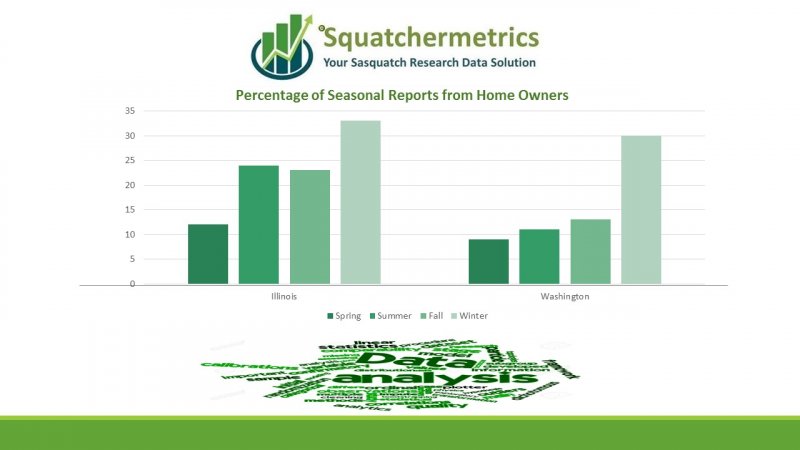Leaderboard
Popular Content
Showing content with the highest reputation on 08/16/2017 in all areas
-
If the operative word is "real," they've done a urine-poor job of providing a whit of evidence. C'mon, pour it on! "Habituators don't need, nor want to provide any proof!" Shout it to the heavens! And I laugh. No, I sneer. Habituators are a freaking joke.3 points
-
We really overthink (and underthink) this stuff, in my opinion. If a bigfoot is hanging out in a particular area for a period of time, it has a reason for doing it. If it keeps coming back regularly over weeks, months, and years, you can bet it has pretty good reasons for that too. I'd say the big three reasons are Food, Safety, and Potential Mates (going all Maslow, on you here). The order of priority is going to vary depending on the individual and the prevailing circumstances (availability of food based on time of year, human intrusion into group areas, etc.). If a group is being provided with food, and the people providing food for them (knowingly or otherwise) leave them alone, then they're going to have a reason to stay and less of a reason to leave, especially if the females of the group are feeling well fed, safe, and more inclined to be potential mates. Just a hypothesis. Water is another reason that bigfoot may stay close to a particular area, but it gets overlooked. Someone; Byrne, I think; proposed that bigfoot only populate areas where there is at least a certain amount of rainfall, and that perception persists, but it isn't universally true. I've shared sightings on this forum from arid areas, and others have reported bigfoot in relatively arid regions in the Southwest, often near small lakes. I'm certain that their populations are higher in areas with greater rainfall, but it may be that the chance of encountering one is lower there than in arid areas from which we have reports. Here's why I think this. In arid areas water is both scarce and vital, so resident or itinerant bigfoot are going to be drawn to them. Humans in the area are also often going to use these areas for property development, or for recreation. This brings them together. Really, this is nothing new if you get right down to it. Look at any African watering hole in the dry season. So I'm thinking more and more, that if I ever get a chance to do some field work, I'll be looking at water sources in arid areas as a possible study area.2 points
-
Stuff and nonsense. The H word is useless in this arena, meaning almost anything people want it to, from "researchers" going out to the same camps over and over with their sandwiches, pies, bbq baits, etc. to the folks who have somehow crossed paths more than once, sometimes at homes or on their farms. All the "researchers" know it's not unusual for that to happen, often when folks don't welcome such. Even your buddies Bear and Coonbo acknowledge such activity from experience and legit reports.2 points
-
There are plenty of threads that will lead to opinions getting expressed on the subjects of range and population. I thought I'd start a thread to zone in on opinions as they stand at this point in time. I'd rather this topic not turn into an existence debate but rather discussion about population, density, range, migration, etc. IMO, IF BF exists, it would be in a small numbers and rather nomadic in nature. This would connect a few dots in the Bigfoot mystery for myself but opens up other possible mysteries. 1. Sightings - a nomadic BF could account for its ellusivness. If it's always on the move sightings could be far and few between and not really repeatable if it's a county away in 2 days. Let's say a sloppy BF is seen on a given date if it's seen again a week later it could be 100 miles away. It would take months/years ( or never ) to actually put a pattern to a single BF on the move. That's even assuming each witness actually reported it to an "authority" that was looking for BF. 2. Habitat - A nomadic BF if elusive, leaves a small enough "footprint" to avoid detection if in an area for a brief time. This smaller "footprint" is reflected in both the local food chain and changes physically to its surrounding environment. That's all I got for now but hope to add more later. I'm interested in hearing what people believe and any pro's or con's to your beliefs.1 point
-
Nothing in my previous posts have anything to do with pro kill...... You have a real problem in your perception of people. Yuchi? If you told me you have Bigfeet on your property and you swore me to secrecy? Id keep your secret. And I would never ever consider trespassing on your property! And I would never ever consider shooting a bigfoot on your property even if you gave me permission to hunt deer there. Because I know how you feel about it. Your the property owner your wishes would be respected. If I cannot handle that then I should stay away. Im an honorable person, which may ring hollow on a internet forum. But all of my Squatch hunting is done on public lands. I dont stalk people and their property looking to shoot a Bigfoot out from under them. But there are lots of people out there with BIG mouths. If your habituating Bigfoot on your property and dont want people knowing about it? The answer is simple....shut up, dont talk. The fact that they do talk about it? Means they are either dumb or they really DO want to draw attention to themselves! I will not say another word on this.1 point
-
^^ Well that's just plain silly I'd say. Anyone that put much emotional investment into BF might need to take a step back.1 point
-
Because those are the people who needs an identity on the internet. They read others stories and decides to make one of their own. Always with the "I don't have to show any proof" attitudes along with blurry pictures of orbs following the Bigfoot around. And then they get accepted into which ever Bigfoot group on facebook that allows that stuff and bam, instant fake online friends and conversation. Kinda like a certain thread on this forum. From the looks of it, mostly old cat ladies come up with these stories.1 point
-
I don't believe it's possible neither, and trust me i've looked in to trying to do it for years but don't see how it could even be remotely possible to do for a tonne of reasons. Saying that however, there has been a fair few reports over the last 10 years of a grey animal in the southern part of the Olympic Peninsula (all in the SSR) in the last 10/15 years that raises my eyebrow. Grey doesn't get reported that much and when you add that to a specific area like it is, then you just may start to think of the possibility that it's the same animal. But of course it might not be, there could easily be more than one animal that is grey in that area. From my perspective however i see sighting reports from a KPI perspective as nothing else but location and season/date. That for me is the key to any report, and most important. It's those indicators that i believe can help the most in building up trends and patterns. From there you can start to dig in to potential "why's" and look at possibly potential food sources in specific locations etc, and stuff like that, building up a picture. So much of the rest is subjective, even witnesses describing coloring imo. I love this thread though, thanks for starting it. My $0:02 ? I think they utilize family type groups that have home ranges in general but move a lot based on food availability and mating, you would then get rogue animals aside from the family groups that would be predominantly male.. Continent wide population estimates i'd have no idea on, wouldn't even like to guess because of Canada and Alaska and the habitat it has and lack of people. The lower 48 is different though. I think we can build up rough guesstimates if we split up areas. Just to throw one out there with my belief, i'll go anywhere between 500 - 1,000 in WA State at any one time based on sub-division of different geographical zones and the habitat and food sources available. That isn't a viable size for a healthy, breeding population however, and that's one of the big reasons why i believe they move a lot. One interesting thing i found over the last few years though was a general, small ish area that i honestly thought for a number of reasons (don't have time now, work soon, sorry) could potentially be used for mating at a specific time of year because of sighting reports, the specific location and local testimony which had no idea of the numbers i had found, which matched up. I really want to write it up well instead of just free typing it in a rush. Strategic, seasonal opportunists ? Look at this, look at the colder climate States compared to the warmer climate States. And this.. Edit : Gig, these are old charts before we put BFF on, for clarification. It's on everything now going forward.1 point
-
If people want to be left alone? How does the word get out? I dont get it. If there is a problem of "wild eyed gunslingers" showing up on their property? It is a problem of their own making! The only way "the word" gets off the ranch is if I make it so. And anybody that thinks they can trespass on my ranch without permission? Has another thing coming...1 point
-
^ possibly and that's assuming that the BF walks within 30 yards of his camp, when he's up and around, and he's paying attention. It's not a needle in the haystack, it's two needles landing near each other in a hay stack.1 point
-
One thing to consider is that BF are not mindless amblers like bears. Moving from patch to patch looking for food then hibernating all winter. If BF are near human in intelligence they have tribal memories and seasonal hunting and gathering methodology. If so we should expect great similarity to Native American behaviors. Some areas they might be able to work nearly year round, as Native American tribes did. I can see that West of the Cascades as the Native Americans had the largest villages East of the Mississippi before the influx of Europeans. Large log and wood plank houses pretty much permanent in nature were not indicative of a lot of tribal migration. Moderate climate along with high density of fish migrations, deer, elk, berries in season, and edible vegetation made migration for subsidence unnecessary. Perhaps futher East, with more severe weather, the migrations necessary are greater to stay in more temperate climate and in areas with sufficient food. They had summer and winter camps, moved to food sources as the seasons changed and it got cold at high elevations. The more severe the climate variations the more migration related to that and food sources. The plains Indians followed the buffalo herds with huge migrations. So we should expect the same sort of variations with migration behaviors with bigfoot related to climate and food sources. So I think it very unlikely that BF behavior is similar region to region. The more intelligent they are found to be, the more likely their behaviors as far as migration and food gathering are found to be different. We have seen some of that with behavior differences being reported. Tree break offs, stick structures, etc are fairly common in some areas but unseen in my area. But I hear people claiming that what they are seeing is the only sure sign of BF activity. I doubt there is much similarity in BF behavior in Ohio and that near Mt St Helens.1 point
-
hey Twist. I don't know anyone trying to track a single BF via sighting reports. Do you? Sighting reports are useful in revealing patterns of a population. If you don't realize that then... umm.. never mind. Anyway, you probably should have sited some hypothesis about BF populations in order to get the thread started. Let me help you out: 1) I'll start with the earliest hypothesis by a PhD biologist, Dr Grover Krantz. He theorized that BF lives in the same environment as bears do, but are many times fewer in number. His idea is that they share the habitat based on time of day. Bears during the day, BF at night. I'll skip the details so that they can serve as the basis of argument for the thread. Basically Krantz thinks: Male BFs have a 100 square mile range Female BFs and babies much less Guesstimate 20 years ago: 10k - 15k BFs in all of North America.1 point
-
The clan we interacted with (2002-2004) on and around the Rogers county Oklahoma location numbered 7-9 individuals. I recall the night when reloading a game camera bait station (during a lunar eclipse) when ~7 of them loosed a opera of screams and howls from ~40 yards away that transfixed the two of us for the 2-3 minutes it continued. It wasn't a fearful event rather one of amazement. During this time period, we surmised there were a couple of juveniles that loitered in the general vicinity while the rest of the clan made a circuit around Oologah reservoir apparently following the deer herds. Anytime we observed deer prevalent in our vicinity, activity/action was almost a given. When the whitetail were absent, activity was almost always nonexistent. Subsequent residential development encompassed much of the previously vacant land and (~2006-2009) the intrusion of a so-called BF research organization and (per the landowners in the adjoining properties) multiple incidents of gunfire during night time "expeditions" appeared to have the effect of causing the clan to abandon the general area. Therefore, it is the conclusion belligerent actions by people toward them will cause a move. The NAWAC experience on the Branson property (and, adjoining property) further appears to buttress this finding. Basically, the available resources, undisturbed property and lack of hostile encounters with people seem to be proximate factors in numbers of Sasquatch found in a given area. That's likely why the relative expansiveness of the Kiamichi mountains in SE Oklahoma is so conducive to a population that is both stable and possibly even expanding.1 point
This leaderboard is set to New York/GMT-05:00









